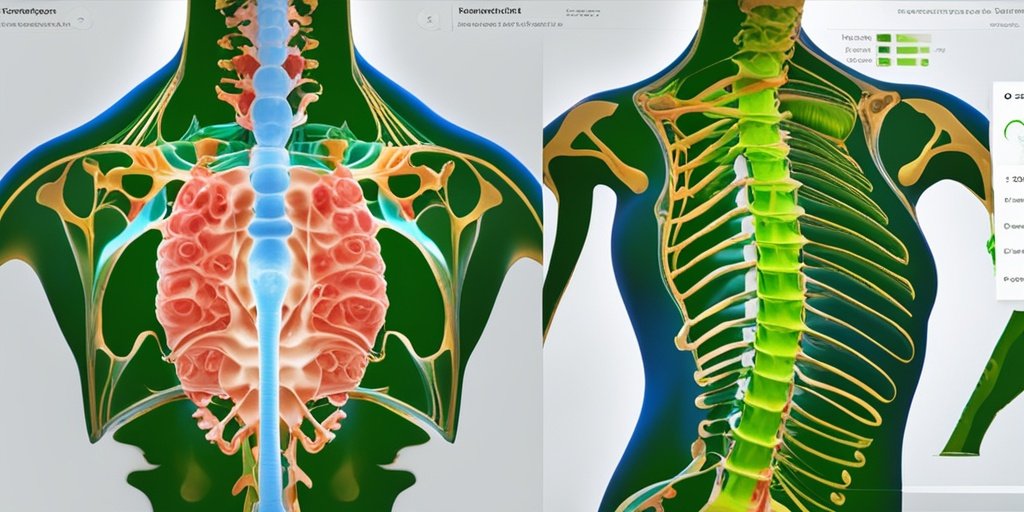⚡ Quick Summary
This study explores the use of AI-CT-based 3D body composition analysis from the entire L1-L5 lumbar spine to predict chemotherapy dose-limiting toxicities (DLT) in colon cancer patients. The findings indicate that this comprehensive approach significantly outperforms the traditional single vertebral level analysis.
🔍 Key Details
- 📊 Dataset: 184 non-metastatic colon cancer patients
- 🧩 Features used: 3D body composition measures from L1-L5 lumbar spine
- ⚙️ Technology: AI auto-segmentation for body composition analysis
- 🏆 Performance: AUC of 0.75 and accuracy of 0.75 for L1-L5 data
🔑 Key Takeaways
- 📊 60.9% of patients experienced DLT during chemotherapy.
- 💡 Neuropathy was the most common toxicity, affecting 43.8% of patients with DLT.
- 👩🔬 Patients with DLT exhibited lower muscle volume across all lumbar levels.
- 🏆 The AI model using L1-L5 data outperformed the L3 level model (AUC 0.75 vs. 0.65).
- 🌍 This study highlights the importance of body composition in predicting chemotherapy toxicity.
- 🔍 Early identification of high-risk individuals can improve patient quality of life.

📚 Background
Chemotherapy is a cornerstone in the treatment of colon cancer; however, dose-limiting toxicities (DLT) can significantly hinder treatment efficacy and patient quality of life. Traditional methods of predicting these toxicities often rely on limited data, which may not fully capture the complexities of individual patient body composition. Recent advancements in imaging and artificial intelligence offer new avenues for enhancing predictive accuracy.
🗒️ Study
This retrospective study analyzed data from 184 non-metastatic colon cancer patients undergoing adjuvant chemotherapy. The researchers aimed to compare the predictive capabilities of 3D body composition measures derived from the entire L1-L5 lumbar spine against the conventional single vertebral level (L3) analysis. Utilizing AI for auto-segmentation, the study sought to enhance the understanding of how body composition influences chemotherapy toxicity.
📈 Results
Out of the 184 patients, 112 (60.9%) experienced DLT, with neuropathy being the most prevalent toxicity. The analysis revealed that patients with DLT had significantly lower muscle volumes across all lumbar levels. The machine learning model that incorporated data from the entire L1-L5 region demonstrated a strong predictive performance, achieving an AUC of 0.75 and an accuracy of 75%, surpassing the L3 level model’s performance.
🌍 Impact and Implications
The implications of this study are profound. By leveraging AI and comprehensive body composition analysis, healthcare providers can better predict which patients are at risk for chemotherapy-related toxicities. This advancement not only enhances treatment planning but also aims to improve the overall quality of life for patients undergoing chemotherapy. The integration of such technologies could pave the way for more personalized and effective cancer treatment strategies.
🔮 Conclusion
This research underscores the potential of AI-driven body composition analysis in predicting chemotherapy toxicities in colon cancer patients. By moving beyond traditional methods and incorporating a more holistic view of patient body composition, we can significantly enhance the ability to identify high-risk individuals early on. Continued exploration in this field holds promise for improving patient outcomes and tailoring cancer treatment to individual needs.
💬 Your comments
What are your thoughts on the use of AI in predicting chemotherapy toxicities? We invite you to share your insights and engage in a discussion! 💬 Leave your comments below or connect with us on social media:
Improving the prediction of chemotherapy dose-limiting toxicity in colon cancer patients using an AI-CT-based 3D body composition of the entire L1-L5 lumbar spine.
Abstract
PURPOSE: Chemotherapy dose-limiting toxicities (DLT) pose a significant challenge in successful colon cancer treatment. Body composition analysis may enable tailored interventions thereby supporting the mitigation of chemotherapy toxic effects. This study aimed to evaluate and compare the effectiveness of using three-dimensional (3D) CT body composition measures from the entire lumbar spine levels (L1-L5) versus a single vertebral level (L3), the current gold standard, in predicting chemotherapy DLT in colon cancer patients.
METHODS: Retrospective analysis of 184 non-metastatic colon cancer patients receiving adjuvant chemotherapy was performed. DLT was defined as any occurrence of dose reduction or discontinuation due to chemotherapy toxicity. Using artificial intelligence (AI) auto-segmentation, 3D body composition measurements were obtained from patients’ L1-L5 levels on CT imaging. The effectiveness of patients’ 3D L3 body composition measurement and incorporating data from the entire L1-L5 (including L3) region in predicting DLT was examined.
RESULTS: Of the 184 patients, 112 (60.9%) experienced DLT. Neuropathy was the most common toxicity (49/112, 43.8%) followed by diarrhea (35.7%) and nausea/vomiting (33%). Patients with DLT had lower muscle volume at all lumbar levels compared to those without. The machine learning model incorporating L1-L5 data and patient clinical data achieved high predictive performance (AUC = 0.75, accuracy = 0.75), outperforming the prediction using single L3 level (AUC = 0.65, accuracy = 0.65).
CONCLUSION: Evaluating a patient’s body composition allowed prediction of chemotherapy toxicities for colon cancer. Incorporating fully automated body composition analysis of CT slices from the entire lumbar region offers promising performance in early identification of high-risk individuals, with the ultimate aim of improving patient’s quality of life.
Author: [‘Cao K’, ‘Yeung J’, ‘Wei MYK’, ‘Choi CS’, ‘Lee M’, ‘Lim LJ’, ‘Arafat Y’, ‘Baird PN’, ‘Yeung JMC’]
Journal: Support Care Cancer
Citation: Cao K, et al. Improving the prediction of chemotherapy dose-limiting toxicity in colon cancer patients using an AI-CT-based 3D body composition of the entire L1-L5 lumbar spine. Improving the prediction of chemotherapy dose-limiting toxicity in colon cancer patients using an AI-CT-based 3D body composition of the entire L1-L5 lumbar spine. 2024; 33:45. doi: 10.1007/s00520-024-09108-8